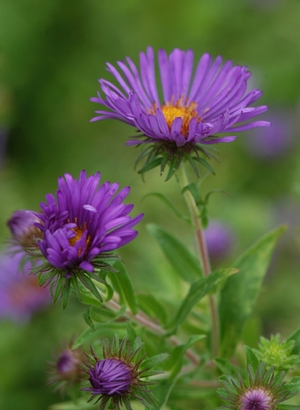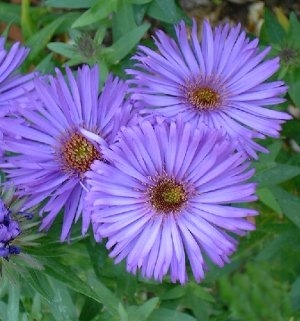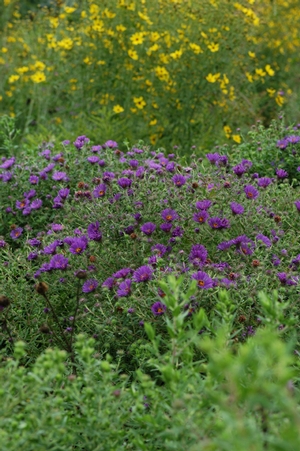Aster novae-angliae
Common: New England asterAster novae-angliae LP50 - 50 per flat
- Height: 4'-6'
- Spread: 2'-3'
- Spacing: 12"-18"
- Hardiness Zone(s): 3-8


Aster novae-angliae LP50 - 50 per flat


Blooms ranging from blue-purple to lavender-pink pop in the late summer and fall landscape. A large, showy native aster that is a must-have autumn nectar source for pollinators.
Grow in full sun in average to moist soil.
Aster novae-angliae, now Symphyotrichum novae-angliae, is a native that grows 3-6’ tall with 4-5” leaves are very hairy. It is a large, showy aster covered in 1 1/2” blooms with golden centers in colors that range from blue-purple to lavender-pink. The New England aster is a must-have autumn nectar source for pollinators, including Monarchs as they stock up for their travels to Mexico.
Originally occurring in moist prairies, meadows, thickets, low valleys and stream banks throughout the eastern United States, New England aster grows in full sun in average to moist soil. It can tolerate a variety of conditions and soil types.
Aster species are a staple in plantings with the intention of erosion control and pollinator habitat. They are populated in our meadows, bioswales, and constructed wetlands, bringing late season color and pollinator nectar sources in our natural areas.